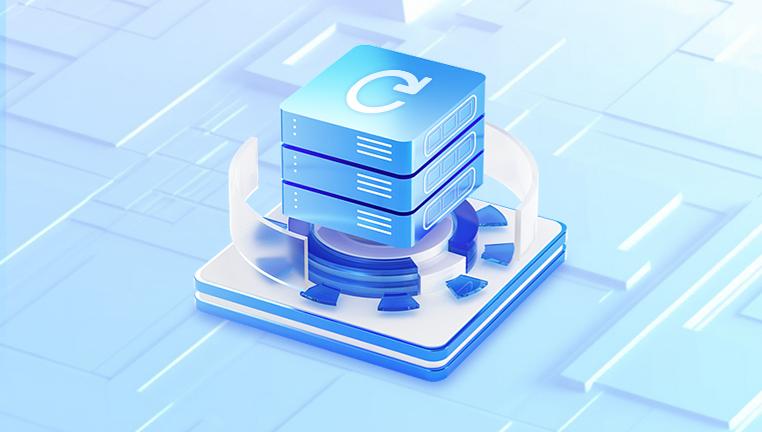Hard drive recovery can vary widely in cost, depending on a number of factors, including the type of damage to the drive, the service provider, and the specific recovery needs. Whether you’re facing a physical failure, data corruption, accidental deletion, or some other issue, understanding the factors that influence pricing is crucial.
1. Types of Hard Drive Recovery Services
Hard drive recovery services generally fall into a few categories based on the type of failure and the method required to retrieve the data. Here are the primary categories:
a. Logical Recovery (Software-Based)
Logical recovery involves the use of specialized software to retrieve data from a hard drive that is logically damaged, such as from file system corruption, accidental deletion, or formatting errors. This type of recovery does not involve physical intervention with the drive, and it is often the least expensive form of data recovery. Common tools include programs that scan the hard drive for recoverable files.

Cost Range: Typically, logical recovery services can cost anywhere from $100 to $500. depending on the complexity of the issue and the provider.
Examples of Services: Recovering files from a formatted drive, or getting back lost files due to accidental deletion or partition issues.
b. Mechanical Recovery (Physical Failure)
Mechanical recovery is necessary when the hard drive suffers a physical failure, such as a motor failure, read/write head crash, or damage due to impact or environmental conditions (e.g., water or fire damage). This type of recovery is more complicated, as it often requires opening the drive in a clean room environment and replacing parts to retrieve the data.
Cost Range: Mechanical recovery can be significantly more expensive, typically ranging from $500 to $3.000. depending on the severity of the physical damage and the difficulty of accessing the data.
Examples of Services: Recovering data from a hard drive that has been dropped, exposed to liquid, or suffers from a head crash.
c. Firmware Corruption Recovery
Firmware corruption occurs when the firmware that controls the drive becomes corrupted, making the drive inaccessible. In such cases, the recovery process may involve reprogramming the drive’s firmware or rebuilding the drive’s firmware on a working drive.
Cost Range: This type of recovery is often complex and can cost between $500 to $2.500. depending on the severity of the corruption.
Examples of Services: Recovering data from drives with firmware corruption issues or inaccessible drives that won’t boot due to firmware errors.
d. Solid-State Drive (SSD) Recovery
SSDs are faster and more durable than HDDs, but they are also more complex when it comes to data recovery. SSDs use flash memory instead of spinning disks, which can complicate recovery due to wear leveling algorithms and TRIM commands. While logical recovery can still be performed on SSDs, mechanical recovery is often more challenging because of the lack of moving parts.
Cost Range: SSD recovery typically costs between $600 and $2.000 or more. This is due to the need for specialized tools and techniques to retrieve data from NAND flash memory.
Examples of Services: Recovering data from a failed or damaged SSD, such as from power failures or electrical shorts.
2. Factors That Affect Hard Drive Recovery Cost
Several factors can influence the cost of hard drive recovery. These factors include the type of failure, the complexity of the recovery process, the amount of data, and the specific recovery methods employed. Let’s break these down:
a. Severity of the Damage
The more severe the damage to the drive, the more expensive the recovery. Logical failures are typically less costly to recover than mechanical or physical failures. For example, recovering data from a drive that has been dropped and has a head crash or motor failure will likely require a much higher level of expertise and more time than recovering data from a drive that was simply accidentally formatted.
b. Type of Hard Drive
The type of hard drive (HDD or SSD) also plays a significant role in the cost. While recovery from an HDD is generally cheaper, SSDs can be more expensive due to their complexity and the specialized tools needed for data retrieval. Additionally, enterprise-grade drives (used in data centers or high-performance applications) can require more advanced recovery techniques, which can further increase the price.
c. Level of Service
Many data recovery companies offer different levels of service. If you require expedited recovery (often referred to as an emergency or priority service), this will typically come at a premium cost. For example, recovering data within 24 hours can cost more than recovering it within a week.
Standard Service: 7–10 business days, less expensive.
Expedited Service: 1–3 business days, significantly more expensive.
d. Data Size and Complexity
The amount of data to be recovered can also influence the cost. Larger drives with more data will typically cost more to recover, as the process will take more time and resources. Additionally, if the data is fragmented or severely corrupted, it may require more effort to extract, driving up costs.
e. Success Rate and Risk
Some companies charge based on the likelihood of success, offering a "no data, no fee" policy. However, in some cases, companies might charge an initial diagnostic fee to evaluate the drive and assess whether data can be recovered. If the chances of recovery are low, the company might offer a discounted rate or advise against pursuing recovery if the cost is prohibitive.
3. What’s Included in the Cost of Data Recovery?
Most data recovery companies provide a full service that includes diagnostic evaluation, recovery of the data, and delivery of the recovered files. Here’s a breakdown of what’s typically included in the cost:
a. Diagnostic Fee
Many data recovery companies offer a free or low-cost diagnostic assessment to determine the cause of the failure and provide an estimate for recovery. However, some companies may charge a fee for this service, especially if the issue is complex.
Cost Range: Diagnostic fees can range from $0 to $200. depending on the provider and the level of analysis required.
b. Recovery Process
The actual recovery involves extracting data from the damaged drive, which can include repairing the drive (if necessary), running recovery software, or physically replacing parts. The recovery process is typically where the bulk of the cost lies.
Cost Range: This could vary from $100 (for simple logical recovery) to $2.500 or more (for complex mechanical recovery).
c. Delivery of Recovered Data
Once the data has been recovered, it will typically be delivered to you on a new storage device. The cost of this storage medium is usually included in the overall price, though some companies may charge separately for the cost of the external hard drive or SSD used to deliver the recovered files.
Cost Range: The cost of the storage device is usually in the $50 to $200 range, depending on the size and type of device.
d. Warranty or Guarantee
Some companies offer a warranty or guarantee on their recovery services, which can give you peace of mind in case the recovery is not successful. For example, some companies may guarantee the recovery of at least 90% of your data or offer a partial refund if the recovery is unsuccessful.
Cost Range: This might add anywhere from 5% to 20% to the total cost of the recovery.
4. DIY vs. Professional Data Recovery
While professional recovery is often the best option for severely damaged drives, some individuals may attempt DIY recovery solutions to save on costs. Software-based recovery tools, like Recuva, EaseUS Data Recovery, and Wondershare Recoverit, are often used for logical failures and can cost as little as $50 to $100. However, DIY methods come with their own set of risks:
Pros of DIY Recovery:
Lower Cost: DIY tools are relatively inexpensive compared to professional recovery.
Quick Access: You can attempt recovery immediately without waiting for a service provider.
Cons of DIY Recovery:
Risk of Further Damage: Improper handling can make the problem worse, especially for mechanical failures.
Limited Success: DIY tools may not work for severe damage, and the risk of not recovering your data is higher.
5. How to Choose the Right Data Recovery Service
When looking for a data recovery service, it’s essential to consider factors beyond just cost. Here are a few tips to help you make the best choice:
a. Reputation
Choose a company with a strong reputation for successful data recovery. Look for customer reviews and testimonials, and check if the company is certified or has relevant industry experience.
b. Experience and Expertise
Check the experience level of the technicians, particularly if you have a specific type of drive or issue. Highly experienced professionals are more likely to succeed in difficult recoveries.
c. Success Rates
Inquire about the company’s success rates. Companies should be transparent about their rates, particularly for the type of drive or damage you’re dealing with.
d. Pricing Transparency
Choose a company that provides clear, upfront pricing. Be wary of companies that offer very low prices, as they may not provide the level of service you require.




